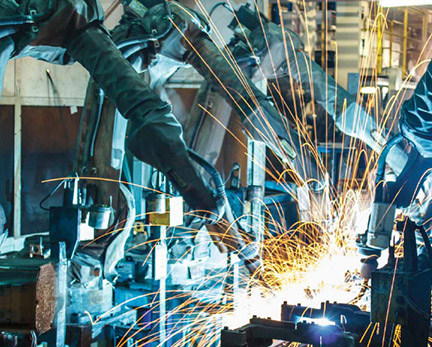The Challenges of Welding Galvanized Steel in the Automotive Industry
What does it take to make light-weight vehicles without sacrificing strength or longevity? The right material.
Galvanized steel continues to grow in popularity as the automotive industry seeks to reduce total vehicle weight and improve fuel economy for consumers (and to meet governmental regulations). The material, however, is not without its challenges to weld.
Why galvanized steel?
Galvanized steel offers two key benefits:
1. It features a protective zinc oxide layer on its surface that provides corrosion resistance and high tensile strengths, even at thinner gauges (1 millimeter or less).
2. It is more cost-effective than materials like aluminum that are also used for light weighting.
Automotive manufacturers can use galvanized steel to build vehicle body skins as thin as 0.7 millimeter, as well as frames, suspension and engine cradles in the 1.6 to 4 millimeters range. Designing these parts with thinner galvanized steel reduces the amount of material for the application and the associated costs.
The challenges of welding galvanized steel
The best features of galvanized steel — its strength at thin gauges and its corrosion-resistant zinc coating — are also the two factors that make it difficult to weld. Burn-through and porosity, both surface and sub-surface, become the main challenges.
The thinness of galvanized steel makes it prone to burn-through should heat input become too high.
The travel speed required to weld galvanized steel directly impacts porosity production. The faster the travel speed, the faster the weld pool tends to freeze. Since zinc vaporizes at a lower temperature than steel melts, the temperature differentiation can trap gas pockets (porosity) before the zinc gas can escape the solidifying weld.
Another challenge is spatter that adheres to the parts and requires costly and time-consuming post-weld cleanup.
Changing welding wire and process can help address the challenges of welding galvanized steel, saving automotive manufacturers time and money.
Learn about FabCOR® F6 metal-cored wire for welding galvanized steel.
This article is the first in a two-part series focused on welding galvanized steel in automotive applications. Read article two, Pulsed MIG Welding Galvanized Steel with Metal-Cored Wire.



